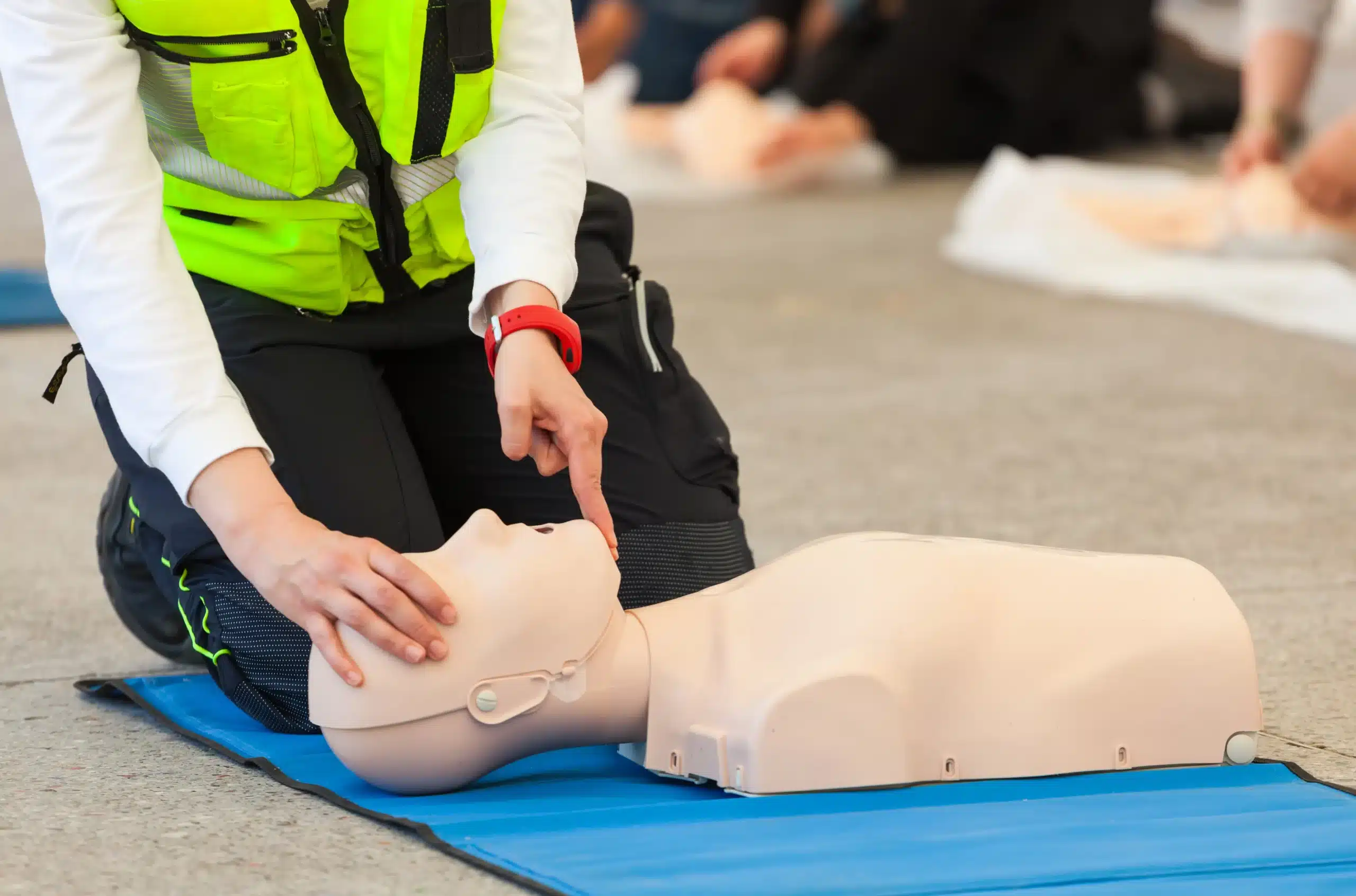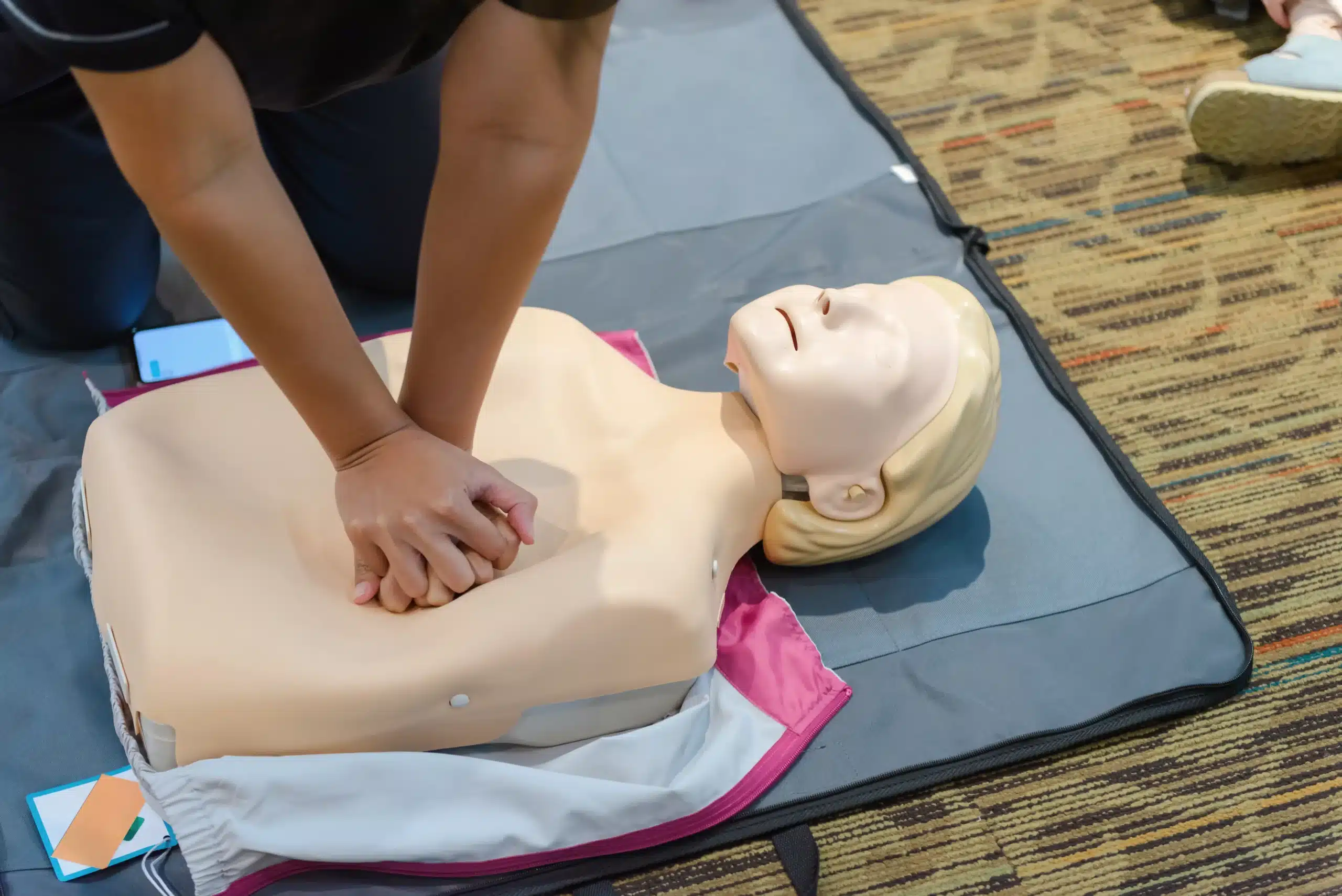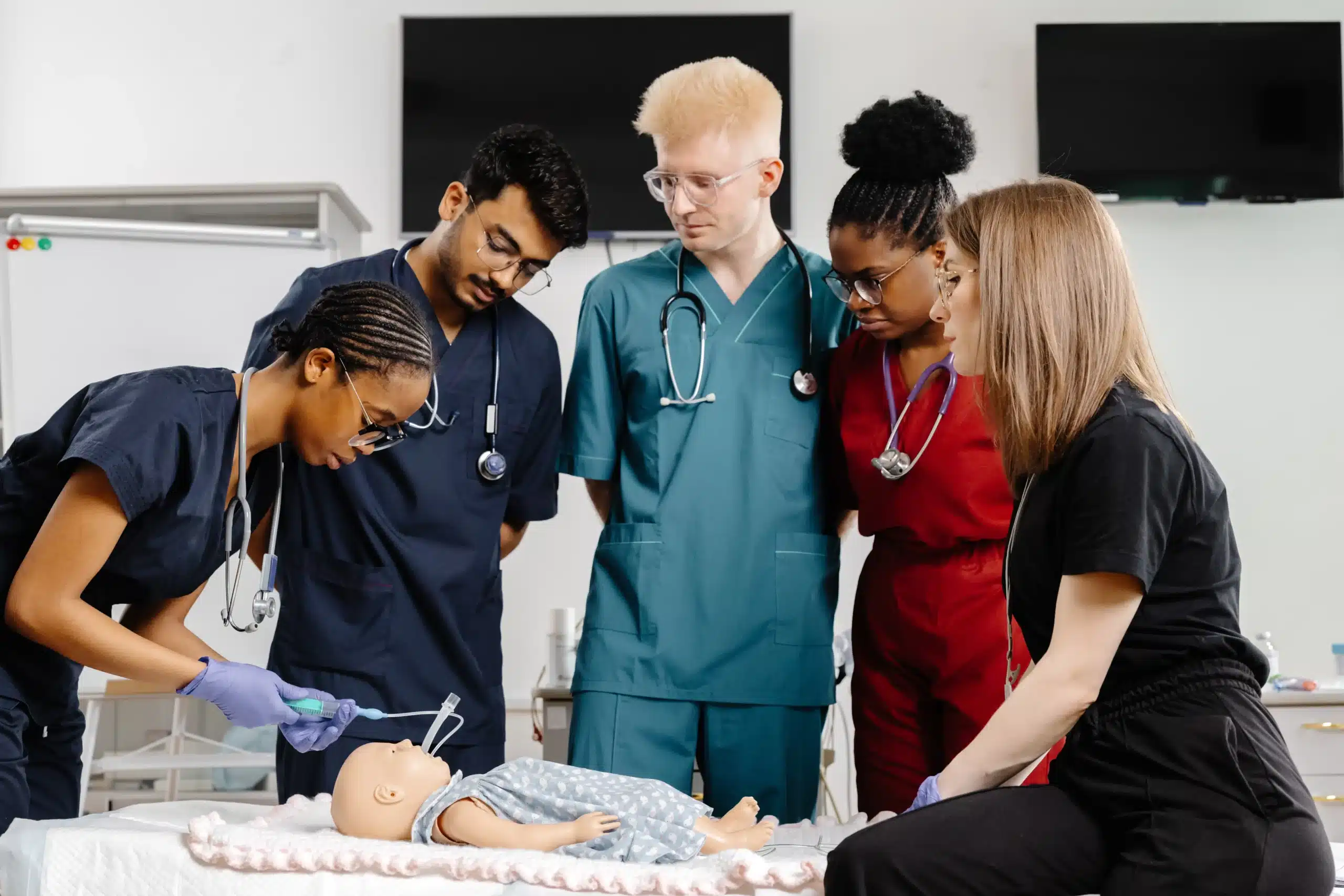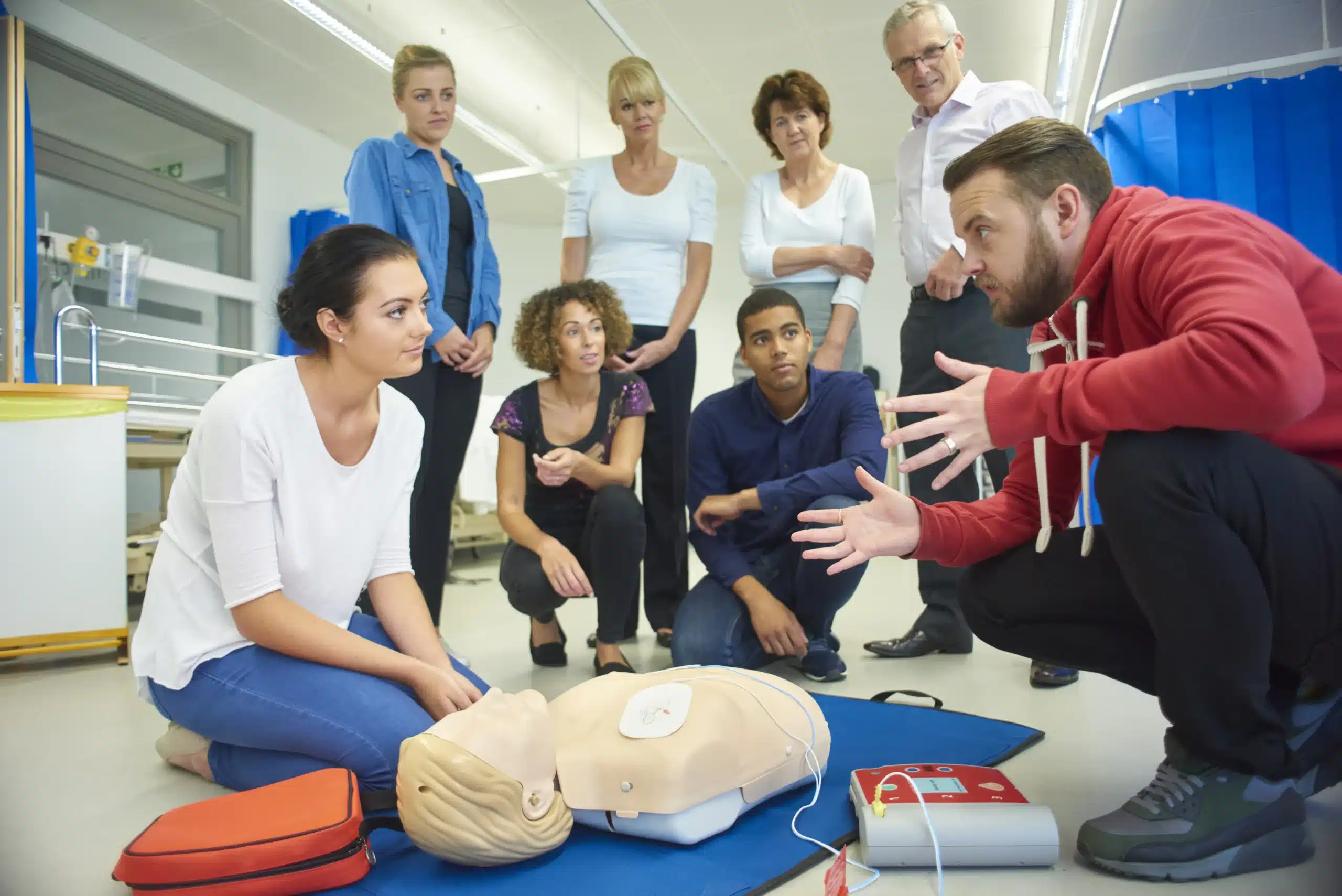Emergencies can happen anytime, anywhere. Being equipped with CPR skills can make you an invaluable asset in those critical moments. If you’re searching for “CPR certification near me,” this guide is your starting point. We’ll cover everything from the basics of CPR to finding the right training program and maintaining your skills. We’ll also delve into the different types of CPR certifications, the costs involved, and the long-term benefits of this life-saving skill. Get ready to empower yourself with the knowledge and confidence to act when it matters most.
Key Takeaways
- CPR certification equips you to handle emergencies: It’s about more than just chest compressions and rescue breaths; it’s about confidently assessing situations, communicating effectively with first responders, and providing crucial care until professional help arrives. Find a program that fits your schedule and learning style, whether online, in-person, or blended.
- Choosing the right CPR program matters: Consider factors like the certifying organization’s reputation (AHA and Red Cross are excellent choices), instructor experience, hands-on practice opportunities, and the availability of continuing education. Don’t let cost be the only factor; prioritize quality instruction and a program that aligns with current guidelines.
- Maintaining your CPR skills is essential: Regular practice and staying current with the latest techniques are key to providing effective care. Look for convenient renewal options like the RQI program to keep your skills sharp and your confidence high. Think of CPR certification as a valuable investment in your ability to make a difference in critical situations.
What is CPR Certification?
CPR certification equips you with the skills to respond effectively during cardiac arrest or other breathing emergencies. It means you’ve completed a recognized training program covering essential life-saving techniques, including chest compressions, rescue breaths, and how to recognize the signs of a cardiac event. While you’re not legally required to have certification to perform CPR, completing a CPR course can boost your confidence and ensure you provide help safely and correctly.
What does CPR certification mean?
CPR certification demonstrates that you’ve received formal training in cardiopulmonary resuscitation. This training covers core skills like chest compressions and rescue breaths and emphasizes quick action and clear communication during emergencies. A good CPR course will also teach you how to assess the situation, ensure the scene is safe, and call for professional medical help. Getting certified shows you’re prepared to take action when it matters most. For those located in Northern California, our CPR directory can help you find training centers near you.
CPR class types and formats
CPR classes fit various learning styles and schedules. You can find in-person, online, or blended formats (a combination of online and in-person learning). In-person CPR classes provide hands-on practice with certified instructors, allowing you to ask questions and receive immediate feedback. Online courses offer flexibility, letting you learn at your own pace. Blended learning combines the benefits of both, offering online instruction and an in-person skills session. Many organizations offer weekend and weekday classes. At Safety Training Seminars, we offer a variety of American Heart Association courses, including BLS, ACLS, PALS, CPR, and First-aid, with a focus on affordability and convenience.
Essential CPR skills
CPR training goes beyond the physical steps. It provides the mental preparedness to handle high-pressure emergency situations. You’ll learn to recognize the signs of a cardiac arrest, assess the scene for safety, and activate the emergency response system. The training emphasizes clear communication with emergency dispatchers and other responders. Most importantly, it builds your confidence to provide assistance when every second counts. Safety Training Seminars offers a modern RQI program through the American Heart Association for a fast and efficient certification process. We also have a low price guarantee.
Find Top-Rated CPR Training
Finding the right CPR training program is crucial for confidently handling emergencies. This section guides you through locating classes, assessing their quality, and understanding the leading organizations offering certification.
How to find local CPR classes
Start your search by checking with nationally recognized organizations like the American Red Cross, which often has local chapters offering a range of courses. A quick online search can reveal class schedules, formats, and locations near you. Don’t forget to check community centers, hospitals, and local fire departments, as they frequently host CPR training sessions. For those in Northern California, our CPR directory lists CPR class options in San Francisco, San Jose, Oakland, Sacramento, Berkeley, and Concord.
Evaluate CPR program quality
Not all CPR programs are created equal. Look for programs that align with the latest American Heart Association guidelines and are taught by certified instructors. Check if the program offers hands-on practice and uses up-to-date training materials. Consider factors like class size and the instructor-to-student ratio. A program’s emphasis on real-world scenarios and feedback from instructors can significantly enhance your learning. Look for training that includes essential skills like recognizing the signs of a heart attack, providing appropriate chest compressions, and using an AED. The availability of specialized courses like BLS, ACLS, and PALS is also a good indicator of a comprehensive program. Our low price guarantee ensures you receive high-quality training at a competitive price.
Leading CPR Certification Organizations
Several reputable organizations offer CPR certification. Here are a few key players:
American Heart Association (AHA)
The AHA is a well-respected organization known for its comprehensive CPR and first-aid training programs. They offer a range of courses, from basic CPR to advanced cardiac life support. AHA certifications are widely accepted and often preferred by healthcare employers.
American Red Cross
The American Red Cross is another prominent provider of CPR and first-aid training. They offer flexible learning options, including online, in-person, and blended learning formats. Red Cross certifications are recognized nationally and are suitable for various professions.
Safety Training Seminars
Safety Training Seminars offers a variety of American Heart Association courses, including BLS, ACLS, PALS, CPR, and First-aid, with a focus on affordability and convenience. Our modern American Heart Association RQI program offers a fast and efficient certification process.
National Safety Council
The National Safety Council provides CPR and safety training for workplaces and communities. Their courses focus on practical skills and preparing individuals to respond effectively in emergencies.
ProTrainings
ProTrainings offers a range of CPR and first-aid courses, both online and in person. They provide flexible training options to accommodate different learning styles and schedules.
Choose the Right CPR Certification
So, you’ve decided to get CPR certified—fantastic! But with different organizations and course formats, how do you choose the right CPR certification for you? This section breaks down the key factors to consider.
Factors to Consider
First, think about your specific needs. CPR certification is an ongoing process, requiring regular practice and continuing education to stay up-to-date on the latest techniques. Look for a program that offers refresher courses and updates to best practices so you can maintain your skills. This ongoing learning ensures you’re always prepared to provide effective assistance in an emergency. Confidence in administering CPR can truly make a difference. For more insights on the benefits of CPR certification, check out this helpful article on CPR Classes.
CPR Certification Requirements by Profession
Before signing up for any class, research the specific CPR certification requirements for your profession and location. Some employers and state regulations may require in-person training, while others accept online or blended learning options. Online-only certifications might not meet all requirements, so verifying what’s necessary for your situation is crucial. Double-checking these details beforehand will save you time and potential headaches. This article on HLFirstAid offers a good overview of online CPR certifications and their legitimacy.
Compare Certifications
When comparing certifications, you’ll likely come across programs from the American Heart Association (AHA) and the American Red Cross. While both organizations base their training on AHA guidelines and offer online and in-person courses, there’s a key difference. AHA certification is often more widely accepted, particularly by healthcare employers, as it’s generally viewed as more comprehensive and rigorous. This can be a significant factor if you’re pursuing or currently working in healthcare. This comparison of AHA vs. Red Cross CPR certification on Everyoneshould provides a helpful breakdown of each program. Understanding these nuances will help you make an informed decision and choose the certification that best aligns with your career goals.
CPR Certification: Cost vs. Value
CPR certification is an investment in knowledge and skills that can make a real difference. It’s natural to consider the upfront costs, but weighing those costs against the potential long-term value is key. Let’s break down the typical expenses, explore ways to save, and discuss why CPR training is invaluable.
Typical CPR Class Costs
CPR classes vary in price, often depending on the level of certification, the course format (in-person or online blended learning), and the training provider. Basic CPR certification courses, covering adult, child, and infant CPR, as well as AED use and choking relief, generally range from $75 to $150. More advanced certifications, such as BLS for healthcare providers, may have slightly higher costs. For a fast and efficient certification process, consider the American Heart Association’s RQI program offered by Safety Training Seminars. It’s always a good idea to check with various providers like Safety Training Seminars for their current pricing and any available packages. Remember, the cost shouldn’t be the only deciding factor; the quality of the instruction and the reputation of the certifying organization are equally important.
CPR Class Discounts and Deals
Finding affordable CPR training is easier than you think. Many organizations and training centers offer discounts, especially for groups, students, or those renewing their certification. Keep an eye out for seasonal promotions or early bird registration deals. Some employers even cover the cost of CPR training for their employees, so it’s worth checking with your HR department. Exploring these options can make high-quality CPR training accessible to everyone. Check out Safety Training Seminars’ low price guarantee for competitive rates in Northern California. Contact us to learn more about discounts and deals.
Long-term Benefits of CPR Training
The value of CPR certification extends far beyond the initial cost. This training empowers you to respond confidently and effectively during medical emergencies. Knowing you can potentially save a life brings immense peace of mind—a benefit that’s hard to put a price tag on. CPR certification can enhance your professional credentials, making you a more valuable asset in various fields, from healthcare to education and childcare. The ability to provide immediate assistance in a medical crisis is a skill that can make a profound impact, making the investment in CPR training truly worthwhile. Consider it an investment in yourself, your community, and the well-being of those around you. For those in Northern California, Safety Training Seminars offers a comprehensive CPR directory to help you find the right training program.
Prepare for and Maintain CPR Skills
CPR certification is a valuable skill, but it’s not a one-and-done deal. This section covers how to prepare for your class, what to expect during training, and how to maintain your skills.
What happens during CPR training?
CPR training equips you with the skills and knowledge to respond effectively during cardiac arrest and other medical emergencies. You’ll learn essential techniques like chest compressions and rescue breaths, guided by certified instructors. Beyond the physical practice, CPR classes also cover the reasoning behind each step, helping you understand why these actions are crucial in a crisis. This combination of hands-on training and educational materials builds both your physical skills and your confidence to act quickly and decisively. Many classes also address the mental preparation needed to handle the stress of emergency situations. For a comprehensive learning experience, consider the courses offered at Safety Training Seminars.
Renew your CPR certification
CPR guidelines and techniques can change, so staying up-to-date is essential for providing effective care. Your CPR certification isn’t permanent; it requires renewal to ensure you’re always equipped with the latest knowledge and best practices. Regularly refreshing your skills not only reinforces your abilities but also demonstrates your commitment to providing high-quality care. This ongoing education empowers you to make a real difference in critical situations. Check with your certifying organization, such as the American Heart Association, for renewal requirements and schedules. Safety Training Seminars offers convenient RQI classes for efficient recertification. Find CPR training near you with our Northern California CPR directory. For those seeking American Heart Association certification, explore our available BLS courses. For a fast and efficient recertification process, consider our RQI classes.
Tips for CPR certification success
To make the most of your CPR training, come prepared to actively participate and ask questions. Engage with the material, practice diligently, and don’t hesitate to seek clarification on any points you find unclear. After your training, consistent practice is key to maintaining your skills and confidence. Consider joining refresher courses or practicing with friends or family to keep your knowledge sharp. Remember, the goal is to be ready to respond effectively when needed, and regular practice is the best way to achieve that. For affordable CPR training options in Northern California, check out Safety Training Seminars’ low price guarantee.
Related Articles
- CPR Training in Northern California: Your Complete Guide
- CPR Training in Sacramento: A Ultimate Guide
- The Lifesaving Importance of CPR in Healthcare
- CPR Renewal in San Jose: A Complete Guide
- CPR Certification in San Francisco: A Complete Guide
Frequently Asked Questions
How do I choose between American Heart Association (AHA) and Red Cross CPR certification?
Both are reputable, but AHA certification is often preferred in healthcare settings, seen as more comprehensive. Consider your career goals and where you’ll likely use your certification when making your decision. If you’re unsure, contact potential employers or licensing boards for their preference.
What if I’m nervous about performing CPR in a real emergency?
It’s completely normal to feel apprehensive. High-quality CPR training emphasizes not just the physical steps but also the mental preparedness needed to handle stressful situations. Regular practice and refresher courses can build your confidence and reduce anxiety. Remember, any attempt to help is better than none.
Are online CPR certifications accepted everywhere?
While online courses offer flexibility, they might not meet all requirements. Some employers or regulatory bodies mandate in-person training components. Always check the specific requirements for your profession and location before enrolling in an online-only course.
How much does CPR certification cost, and are there ways to save?
Costs vary based on the course type and provider, but expect to pay somewhere between $75 and $150 for basic CPR certification. Look for discounts offered to groups, students, or those renewing their certification. Some employers also cover the cost of training.
How often do I need to renew my CPR certification?
CPR guidelines and best practices are updated regularly, so renewing your certification is essential. Most certifications are valid for two years. Check with your certifying organization for specific renewal requirements and look for convenient refresher courses to maintain your skills.








